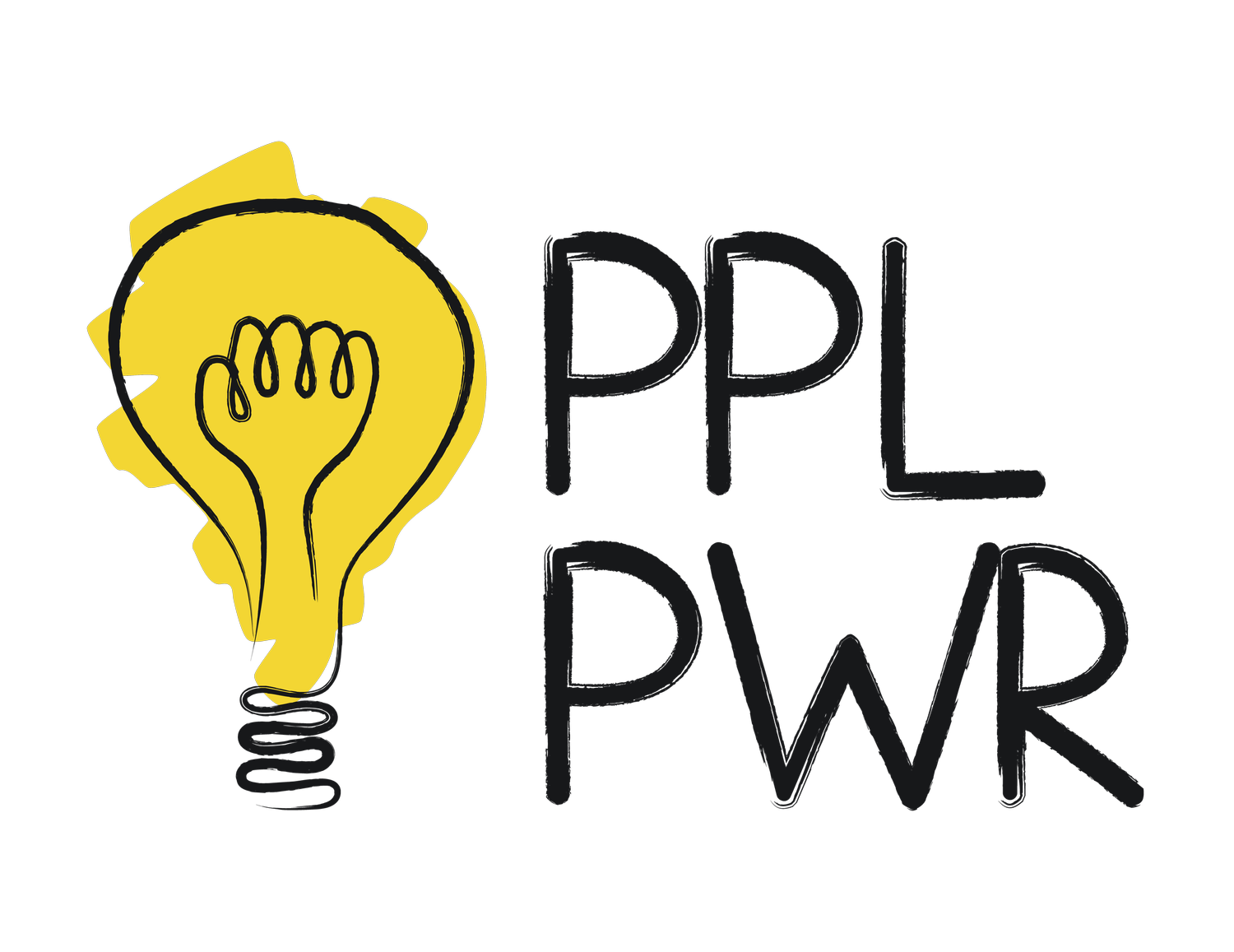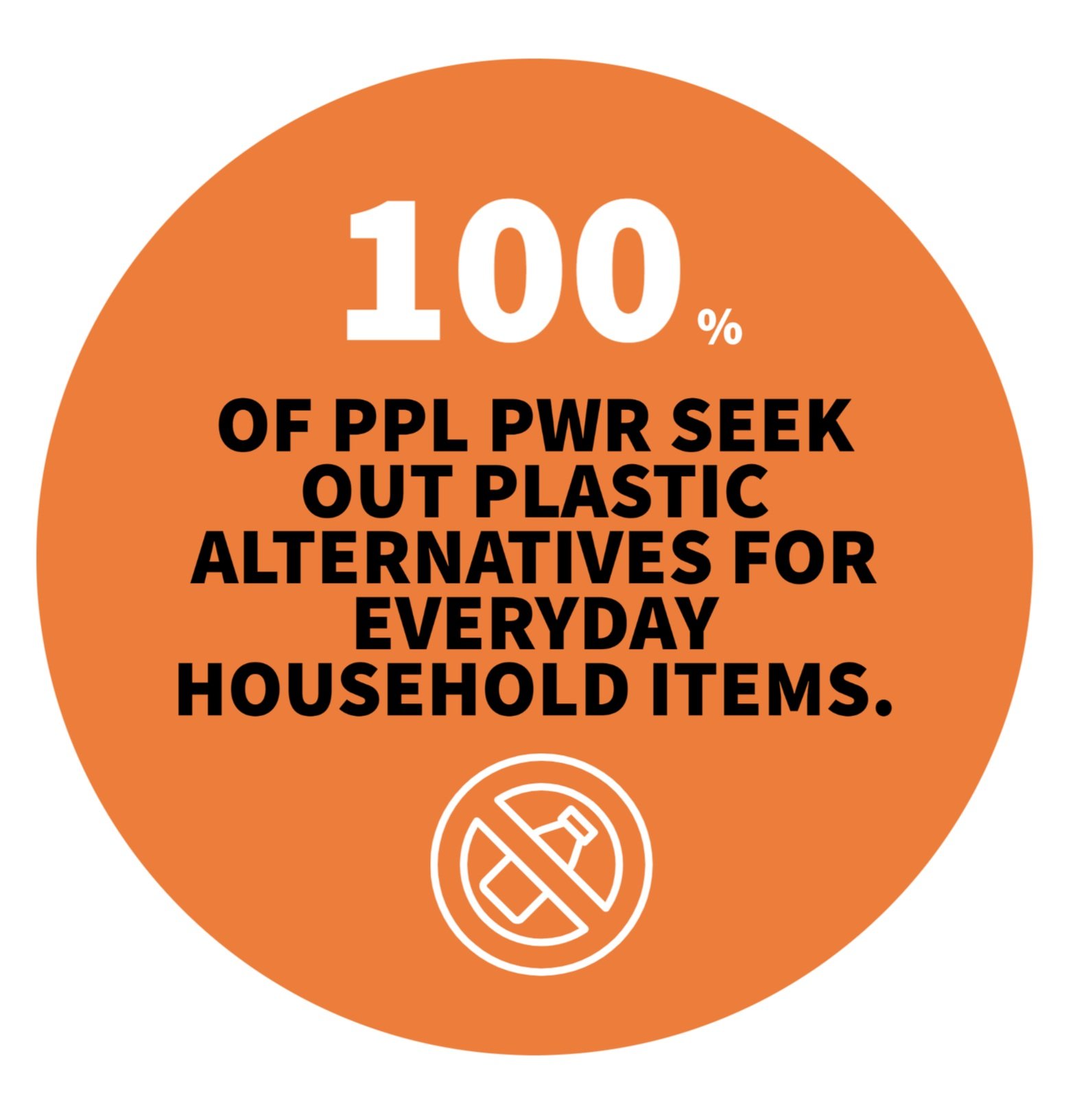At Your Disposal: A Rookie’s Guide to Reducing, Reusing, and Recycling
At PPL PWR, we believe that doing your bit to save the planet shouldn’t cost you the earth. In fact, when it comes to sustainable living, less is often more.
Last week we took a trip down the aisles of sustainable shopping and unpacked the loaded concept of green consumerism. This week, we wrap up PPL PWR’s Green Voices, Smart Choices blog series by laying waste to throwaway culture.
‘We don’t need a handful of people doing zero waste perfectly. We need millions of people doing it imperfectly.’
- Anne Marie Bonneau
What’s the fuss?
Source: Life Magazine. 1955. Throwaway Living: Disposable Items Cut Down Household Chores.
On August 1, 1955, American magazine Life featured a spread on throwaway living accompanied by the subtitle ‘disposable items cut down household chores’. Above the headline appears a black-and-white image of a married couple and their child, embracing the brave new world of consumer capitalism. The young family are caught in a whirlwind of waste, rejoicing at the paper plates, drink cartons, and dinner trays surrounding them, safe in the knowledge that everything that can be bought can be replaced.
The article opens with an enticing vignette of modern living: ‘The objects flying through the air in this picture would take 40 hours to clean—except that no housewife need bother. They are all meant to be thrown away after use.’ This rose-tinted window onto postwar America sold a vision of a prosperous society shaped by increased spending power, an advertising boom, and the birth of the credit card. With growing affluence transforming the citizen into a consumer, ‘disposable’ became the word of the decade.
Fast-forward to the twenty-first century, the hidden iceberg of municipal waste has reached unprecedented heights, with over 2 billion tonnes of solid waste being produced annually, one third of which is mismanaged through environmentally unfriendly practices. By 2050, this figure is expected to increase to almost 3.5 billion tonnes, over double the projected population growth across the same time period.
Source: Kaza et al. 2018. What a Waste 2.0: A Global Snapshot of Solid Waste Management to 2050. Washington, DC: World Bank.
The stakes are particularly high at a time when the cost of living is rising and millions of households are facing serious financial challenges ahead. How then can we be mindful of the planet while also being mindful of our pockets? Cue the three Rs: reducing, reusing, and recycling. Consumerism may be deeply embedded into the fabric of contemporary culture, but if we’re to truly commit to reducing our ecological footprints, we must first assess our own waste output.
Conserving what you have now will preserve what you have in the future—read through the following five tips on how to turn the three Rs into a reality, and you’ll never refuse to reuse again:
1. Don’t be slapdash and leave a job half done, bulk will get you two for the price of one!
Bulk purchasing is not only ideal for buyers on a budget, but it also limits the packaging waste that is produced by single-use plastic. The changing landscape of the fast-moving consumer goods sector has given rise to a new business model in which discounters are gaining foot traffic. Shopping at wholesale retailers such as Infinity Foods will reduce the food miles of the goods that you mass buy, as products are distributed from processing plant to supermarket in freight boxes rather than individually wrapped plastic packaging that must be transported to manufacturers prior to use.
Crucially, bulk buying is not synonymous with overbuying—it’s about being thrifty, not being a spendthrift. Wholesalers and bulk food aisles often provide graduated containers for customers to measure out exact quantities, allowing you to tailor your order size to the amount you need, as opposed to the amount you can convince yourself you need.
Calling all bargain hunters: bulk food store The Source has no minimum order size, meaning you can purchase as much or as little as you please, saving you storage space while you cut down on food waste. That’s two for the price of one. The Source have managed to divert over 5,000 kg of packaging waste from landfill sites and prevent 200,000 pieces of plastic from being produced by selling merchandise in large quantities. So buy in bulk and get bang for your buck—it’s value for money and valuable for the earth.
2. For the sake of survival, give your rubbish a revival!
The average recycling rate in the UK has stagnated at 46%, with 14 million of the 26 million tonnes of domestic waste produced every year being sent to landfill sites. The European Commission has set an optimistic but achievable recycling target of 70% for municipal waste and 80% for packaging waste by the year 2030. A study conducted by sustainability collective Beyond the Box found that one third of British adults believe that the discrepancy between policy goals and current recycling behaviours is primarily caused by a lack of knowledge, with the main source of ambiguity surrounding the types of household plastics that can be recycled.
The national waste campaign Recycle Now has created an online locator tool which enables users to search for local recycling banks filtered by the range of materials that they accept. For those who haven’t quite cracked the wheelie bin colour code, the Recycle Now website also features a digital catalogue that provides an overview of the different types of containers and waste collection services that are available in each London borough. The ultimate aim of sustainable waste management is for waste products to steer clear of landfill sites through the closed-loop recycling of aluminium, glass, and plastic, reducing the volume of virgin materials that are being tapped into. I did intend to wrap this section up with a recycling pun, but all the ones I thought of were rubbish.
3. Get enthusiastic about a world without plastic!
The plastic pollution crisis has become one of the gravest threats to our planet, but the ubiquity of fossil-based plastic as a multifunctional material of modern life seems to warrant it as a necessary evil. Our dependence on the versatility of plastic has led to its use and abuse being treated as tomorrow’s problem, but the benefit of boycotting plastic as a matter of urgency cannot be overstated. Anna from PPL PWR recommends washing up with dish rags instead of traditional yellow sponges, which are glutted with microplastic particles that shed, fall down the drain, infiltrate the water system, and seep into oceans, endangering marine life.
There are a number of biodegradable alternatives to sponges, such as ecoLiving’s compostable cleaning cloths and Peace with the Wild’s non-scratch scourer brushes made from sustainably sourced coconut husks. Although reusable cutlery is greener than its disposable counterpart, when throwaway utensils are unavoidable, the bamboo, maple, or birch varieties are preferable to plastic. Molkie from PPL PWR uses wooden cutlery instead of petroleum-based cutlery, which takes up to 1,000 years to decompose and causes environmental degradation through the release of harmful chemical substances into the atmosphere. At a fork in the road? Perhaps Nisbets’ multi-buy deals on recyclable catering equipment will cut the mustard.
4. Reinvent your image and make garb from garbage!
Does form follow function, or does function follow form? The upside of upcycling is that you decide. PPL PWR members shared their experiences of dabbling in creative reuse. Laura is embarking on a sewing project that involves reviving second-hand curtains by transforming them into a pair of trousers. ‘I’m passionate about ensuring there’s no waste, so I plan on turning the offcuts into a bag or a cushion.’ Fortunately, you don’t need to be a dab hand at all things second-hand to energise a tired wardrobe. Being crafty with clothes might simply mean refreshing denims with a funky knee patch or going for a frayed finish by cutting a raw hem on a pair of distressed jeans.
The sustainable fashion campaign Love Your Clothes, launched by circular economy not-for-profit WRAP, offers a goldmine of step-by-step video tutorials on how to refashion time-worn outfits and make use of odds and ends by designing exclusive and personalised accessories. Becky says, ‘I haven’t been too innovative, but I did repurpose wine bottles as candle holders once.’ This DIY project is as straightforward as inserting a candlestick into a bottleneck, but if you happen to have rubbing alcohol or nail polish remover and string handy, then you can resize the bottle by burning through the glass. Recasting rather than casting-off the knick-knacks that you've outgrown is both rewarding and resourceful, so challenge yourself to make something new and see where your imagination takes you.
5. Reduce planet damage, offload excess baggage!
The plummet in air and land travel throughout the COVID-19 pandemic curbed global carbon emissions by 6.4% in 2020 compared to the previous year. While at face value this statistic is an encouraging sign in an age of eco-anxiety, the fact that this occurred at the social and economic cost of consecutive lockdowns points to the lack of long-term viability of the downturn in carbon emissions. A pickup in green investments is imperative, as without the structural changes necessary for widespread climate action at the industry level, the financing of renewable energy technologies will plateau.
Yashvini from PPL PWR keeps her carbon footprint in check while holidaying by packing light, a minor sacrifice that saves fuel, reduces greenhouse gas emissions, cuts luggage fees, and is exponentially kinder to your back. Yashvini applies the Pareto principle to travelling efficiently, a concept in economic theory that states 80% of results are produced by 20% of causes: ‘You only end up wearing a fifth of the clothes you have anyway.’
For transport, Becky vouches for ride-sharing app BlaBlaCar, which connects drivers and passengers who sign up to carpool on long-distance journeys. The pandemic also brought home the simple pleasures of a staycation. ‘There’s so much beauty to behold in the British countryside. Most of the vacations I take are to UK destinations,’ says Becky. Beyond its environmental merit, by opting for a holistay, you’ll be supporting domestic businesses, creating employment, strengthening the national economy, and helping to build a sense of community spirit in the local area. The social enterprise and online travel agency bookdifferent! promotes responsible tourism by performing accommodation checks for sustainably managed, environmentally friendly firms. From globetrotter to local lodger, vacay a greener way today.
Final thoughts
The linear economy currently sustains a take-make-dispose model of resource consumption, normalising an ‘out of sight, out of mind’ approach to waste management. Throwing around the term ‘throwaway’ implies that there’s a satisfactory endpoint to the journey our waste embarks on, overlooking the fact that if an item is unrecyclable, its final destination is the landfill. Consumer culture and its promise of instant gratification satisfies our desire for expediency, but convenience has its consequences when it comes at the cost of our planet.
Life magazine’s spread on throwaway living is in many ways not only the zeitgeist of 1950s America, but also the blueprint for modern-day consumerism. From bulk buying to sourcing second-hand, the three Rs work better when they’re approached together as a collective strategy for everyday sustainability. Nobody enjoys taking out the trash, so let’s toss out throwaway living once and for all.
That brings us to the end of PPL PWR’s Green Voices, Smart Choices blog series. We hope that over the past month we’ve been able to demystify some of the hot-button issues surrounding individual action on climate change. By cutting through the greenspeak and stripping sustainability down to its basic elements, our goal has remained the same: to meet current needs without compromising future needs. Somewhere between inactivity and reactivity lies proactivity, and it’s through the promotion of mitigation over damage control that together we can effect long-term sustainable change.









